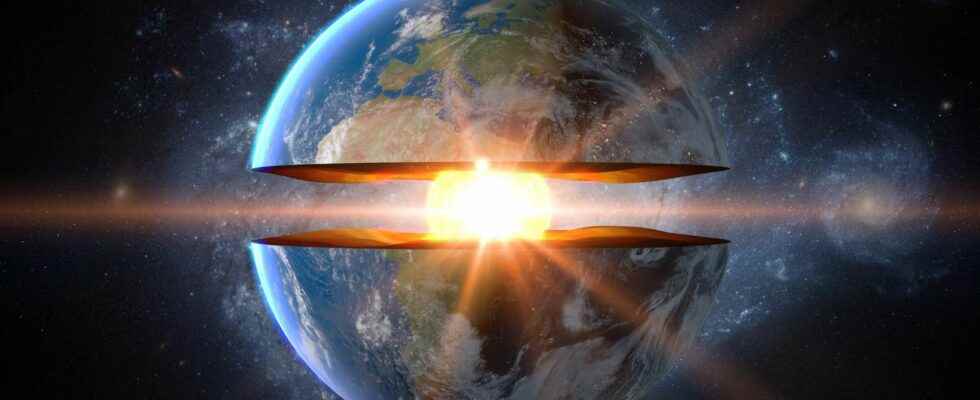the earth core occurs from a depth of 2,900 km. Representing approximately 17% of volume of the Earthit is positioned in its central part and is distinguished in two parts: an outer core liquid and an inner core (or seed) solid.
The outer core is essentially composed of about 80 to 85% of iron very hot in merger. It is stirred by a movement of convection of thermal origin (due to the cooling of the Earth) and it is thanks to it that the Earth’s magnetic field is generated. the inner coreit comes from the gradual crystallization of the outer core and is similar to a very hot and dense ball the size of Plutoalso composed of iron but solid. On the other hand, its exact nature and the movements within it have been subjects of discussion for decades and make the fields of research in geophysics and geochemistry very active.
Techniques for observing and studying the nucleus
One of the problems with studying the Earth’s inner core is that it is not visible, forcing researchers to trick and use indirect methods in order to obtain information about its nature and dynamics. With this in mind, researchers Wei Wang and John Vidale — USC Dornsife scientists — used data from the Large Aperture Seismic Array (Lasa), a linked seismometer system facility from the US Air Force in Montana, which allows recording and increasing the sensitivity of the detection of earthquake and explosions.
This type of data is obtained using special techniques for signal processing digital such as beamforming which suppresses noise and thus improves the signal-to-noise ratio.
Using a new beamforming technique developed by Vidale, the two researchers analyzed waves generated by Soviet underground nuclear bomb tests at Milrow in 1969 and Cannikin in 1971 beneath Amchitka Island. They applied the same method for the period between 1971 and 1974 in the Arctic archipelago of Novaya Zemlya.
How does the Earth’s core behave?
In their latest study, published recently in Science Advances, Wang and Vidale found with these seismic data that the motion of the inner core had changed direction over the six-year period from 1969 to 1974, and had rotated underrotation by at least a tenth of a degree per year. . More accurately, observations indicate that the inner core rotated slightly slower from 1969 to 1971, then started to move in the other direction from 1971 to 1974.
This observation is rather unexpected and first surprised researchers Wang and Vidale. Having an oscillating inner core was a model that had been thought of and existed, but the scientific community was very divided on the viability of this theory. Going further, some scientists claim that this pattern also explains the observed sharp six-year oscillation in daylength (plus or minus 0.2 seconds over six years), and observed regularly over the past few decades.
It therefore turns out that the inner core is not at all fixed as we have long thought, but that it moves and oscillates under our feet. However, the era of underground atomic tests is a thing of the past meaning that scientists must use seismic data from the Earth’s activity which is relatively less accurate, despite recent advances in instrumentation.
Only a few days left to take advantage of our special offer for Father’s Day!
Your father is a great science enthusiast and unusual discoveries? And if you offer him a superb scientific exploration in paper format? Benefit from -20% on the Mag Futura (special offer: €15 instead of 19 €): 220 pages, 4 key issues deciphered to understand everything about the science that will mark 2022.
Special offer: -20% reduction on the Mag Futura
Mag Futura is:
- 4 major scientific questions for 2022, from the Earth to the Moon
- 220 pages, 60 experts
- Home delivery
- Electronic gift card
Interested in what you just read?
